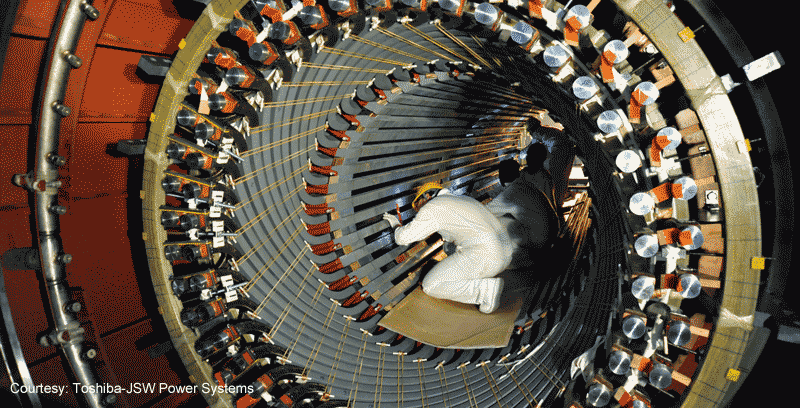India’s supercritical power generation capacity crossed 38 GW as of December 31, 2016, according to statistics released by Central Electricity Authority. It is interesting to note that independent power producers (IPP) had the maximum share of this capacity. Nearly 75 per cent of this capacity, corresponding to 28,550 mw, was built by IPPs with government utilities having a very small share. Central PSUs—mainly NTPC—accounted for 12.4 per cent of this capacity while state government entities had a comparable share of around 13 per cent.
It may be recalled that the very first supercritical power generation unit in India was expected to be that of NTPC with main plant equipment supplied by BHEL. This was in around 2004 when NTPC was working on the 3×660-mw Barh (Stage-I) project in Bihar. Since BHEL was not ready with the technology then, the contract was placed on Russian suppliers. Incidentally, this project is still not complete. The first ever supercritical unit to commission in India was the first 660-mw unit of the Mundra power project of Adani Power. This happened in December 2010. Ironically enough, the main plant equipment for this project was sourced from Chinese vendors. Hence, the very first supercritical unit in India was neither developed by NTPC nor was it supplied by BHEL.
India’s first supercritical power unit
NTPC’s first supercritical unit to commission was in June 2011 and the achievement was recorded at its 3×660-mw Sipat project in Chhattisgarh. NTPC thus missed becoming the owner of India’s first supercritical power unit by a narrow margin of six months. However, it must be acknowledged that NTPC was planning supercritical technology for nearly seven years before its first unit was commissioned but Adani Power could commission the first unit at its Mundra project with an unprecedented gestation period of just three years.
BHEL recorded its maiden commissioning in the supercritical arena in December 2013 when the first unit of NTPC’s 2×660-mw Barh (Stage-2) project went into operations. Both the boiler and the turbine-generator were supplied by BHEL.
As Central and state power units were slow in entering the supercritical power space, their share in terms of capacity commissioned is low. However, when one looks at supercritical power plants under construction, government entities do have a respectable share. Consider this. As of December 31, 2016, nearly 72 GW worth of thermal power plants were under construction. Out of this, supercritical technology corresponded to 46.7 GW, or 65 per cent. This included units of both 660-mw and 800-mw ratings.
Considering only supercritical power plants, Central PSUs (mainly NTPC) had capacity worth 21.86 GW, representing a predominant share of 47 per cent. State power generation utilities had supercritical capacity aggregating 14.32 GW, with a share of 31 per cent. Thus, government entities together had a share of nearly three-fourths. Private entities had a share of 23 per cent corresponding to capacity of around 10.5 GW.
Also read: Total dues of discoms rise 37 per cent in July 2020
India’s longstanding power equipment supplier BHEL that does not have a significant market share in terms of supercritical power units commissioned has staged a remarkable comeback with respect to supercritical units under construction. Correspondingly, the share of Chinese equipment suppliers has receded.
Supercritical power capacity commissioned |
||||
|
(mw) |
||||
|
Central |
State |
Private |
Total |
|
| 2010-11 |
0 |
0 |
660 |
660 |
| 2011-12 |
1,320 |
0 |
4,100 |
5,420 |
| 2012-13 |
660 |
0 |
5,180 |
5,840 |
| 2013-14 |
660 |
0 |
5,320 |
5,980 |
| 2014-15 |
660 |
2,260 |
6,665 |
9,585 |
| 2015-16 |
660 |
2,160 |
4,645 |
7,465 |
| 2016-17* |
800 |
660 |
1,980 |
3,440 |
| Total |
4,760 |
5,080 |
28,550 |
38,390 |
| Share (%) |
12.4 |
13.2 |
74.4 |
100.0 |
| *Up to December 31, 2016 | ||||

